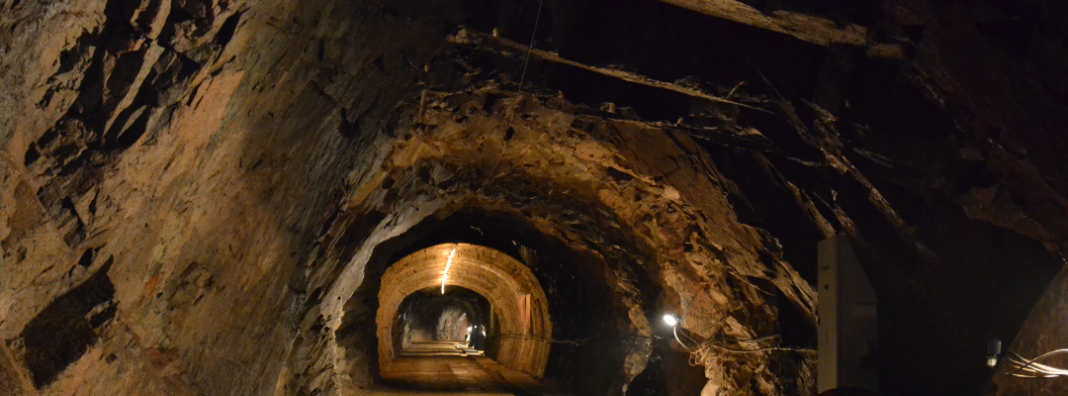
Nuclear energy is on the rise. For decades, the number of nuclear power plants around the world has remained fairly constant. There were over 400 nuclear reactors operating globally in 1987. By the end of 2022, that number had only grown to 440. But momentum is growing thanks to a number of factors, including increasing demand for clean energy and changing public sentiment. According to the World Nuclear Association there are currently 55 reactors under construction, with another 100 planned and 300 proposed.
Here in the US, there are also signs of potential nuclear power resurgence. Just last month, the US Nuclear Regulatory Commission certified the first ever small modular nuclear reactor (SMR) design. SMRs are a new type of reactor that are small enough to be assembled in a factory and shipped on a truck, rather than having to build them onsite. Their small size makes them easier to scale and, hopefully, easier to produce. But as excitement for nuclear grows, the US will have to work fast to resurrect an industry that has been shrinking for decades.
If the US hopes to catch this global rising tide, it is critical to ensure all aspects of the supply chain are ready to rise with it, starting with the uranium fuel used to power reactors.
Growing Demand for Nuclear Fuel
As the US and other countries rely more on nuclear energy, increasing demand for uranium will exacerbate the already strained supply chain. In 2021, mines were only able to supply 77% of global demand. Civil and military uranium stockpiles provided the remaining 23 percent. This presents both serious risks and potential opportunities for the United States.
The United States is the world’s leading consumer of uranium, followed not so closely by China and France. In fact, the US consumed nearly the same amount of uranium in 2020 as China and France combined.
Even before the recent SMR design approval, overall interest in expanding nuclear power has been increasing at the state level. As of June 2022, more than half of all US states had included nuclear power in their plans to reduce carbon emissions. A telling example was West Virginia lifting its ban on nuclear energy, which had been in place since 1996. Many states have avoided nuclear power due to fears of meltdowns. But, with the risk of meltdowns in newer reactors being essentially zero, many states are reconsidering nuclear power.
Additionally, recent federal legislation has secured billions of dollars of funding for nuclear power. The 2021 Infrastructure Investment and Jobs Act opened a $6 billion fund to subsidize older nuclear plants. It also set aside $2.5 billion for research and development for new reactors.
Globally, nuclear power is trending in the right direction as well. In Asia, there are 140 operating nuclear power plants, with around 35 under construction and firm plans for 50 more. Europe currently has 169 operable reactors, 14 under construction, and 109 either planned or proposed. There are another 30 countries considering starting nuclear programs of their own. These include Chile, Estonia, Saudi Arabia, and Australia.
If the US hopes to continue relying on nuclear power as a source of reliable, clean energy, it will soon be facing much tougher competition for the fuel needed to power those reactors.
US Uranium Supplies
In February 2021, President Biden signed the “Executive Order on America’s Supply Chains.” The order required various government agencies to examine the strength and resilience of American supply chains. Among the reports created was a US Department of Energy supply chain deep dive assessment for nuclear energy. One of the major threats outlined in the report is the supply chain for raw uranium and uranium conversion.
Domestic uranium production has been declining since the early 1980s. The US nuclear power industry has always relied on international trade to meet uranium demand. Imports have made up a majority of the US uranium fuel supply for roughly 35 years. In 2021, domestic production accounted for only 5% of total new uranium supplies.
US buyers get almost all of their raw uranium from foreign countries. In the figure below, we see that nearly 50 percent comes from Kazakhstan and Russia with almost 30 percent coming from Canada and Australia. We have very little risk in our relations with Canada and Australia, but Kazakhstan and Russia are more complicated.
US relations with Kazakhstan have been relatively stable, but its proximity to Russia exposes us to an uncomfortable amount of risk. Russia has a long history of being a bad neighbor. Before invading Ukraine in February of 2022, Russia sent troops into Kazakhstan to quell anti-authoritarian protests. There is no guarantee that these key uranium supplies will continue to be available in the future.
These foreign risks don’t stop once the raw uranium ore has been purchased. Before it can be used as fuel, uranium ore is converted into uranium hexafloride, a yellow powder commonly referred to as “yellow cake.” Uranium conversion, like mining, occurs entirely outside of the United States. Nearly 40 percent of converted US uranium comes from Russia and China, and 34 percent comes from Canada and France. The only US conversion facility closed in late 2017 and has been in an “idling-ready” state since 2020. Again, with close to 40 percent of conversion happening in Russia and China, the US faces serious risk of supply chain disruption.
Solutions
Two promising solutions could move us toward a more secure uranium supply chain: increasing domestic mining and conversion, and building up a strategic uranium reserve.
By 2035, the global demand for uranium will reach 209 million pounds annually, but supply will fall short at 114 million pounds—a little over 54 percent. Increasing domestic production could help increase US supplies and potential profits from foreign demand. In addition to financial benefits, domestic production further mitigates risk. If a global emergency occurs and supply chains are shocked, domestic production would allow us to meet our energy needs.
Finally, we could build up the strategic uranium reserve. First introduced in May 2020, the US Department of Energy created the Restoring America’s Competitive Nuclear Energy Advantage strategy. Not only would the strategic reserve protect US energy during a crisis, but it would also spur domestic mining and conversion. In early 2022, the US Department of Energy issued a bid to purchase up to one million pounds of domestically produced uranium. Later in 2022, Strata Energy was awarded the first contract and will supply 300,000 pounds to the reserve.
While the reserve is a good start, it is still a long way from being a reliable back-up to international supplies. In 2021, US utilities and plant operators consumed around 18,300 metric tons of uranium, or around 41 million pounds. That means when a supply chain crisis occurs, a one million pound strategic reserve could supply uranium for just 9 days. In comparison, the Strategic Petroleum Reserve has the potential to last for over a year.
Conclusion
Are we about to enter a nuclear renaissance? The United States—and the world—would certainly benefit from one. There has been significant progress with reactor technology, but little emphasis on the mineral that makes it all possible. Nuclear reactors will only lead to energy abundance if there is a steady supply of uranium. If we are serious about abundant, clean energy then we need to take a hard look at our supply chain and make the necessary improvements.


